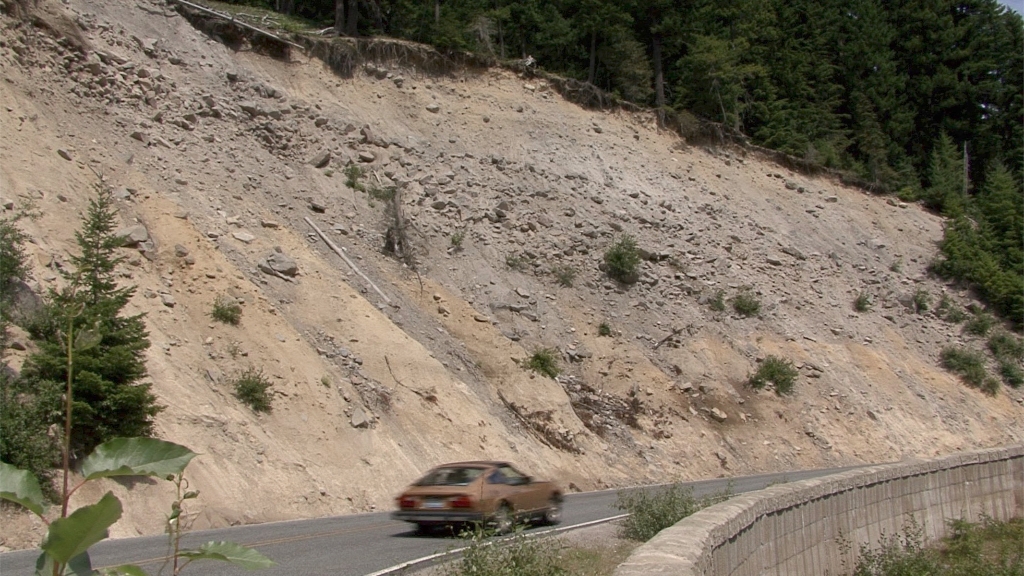
Season: Summer Only (July - September)
Sunrise Road is open to vehicles during the summer only, typically from early July to mid-September.
As you drive up the Sunrise Road, there are several pullouts along the lower part of the road. These pullouts provide a good place to stop and view the exposed hillsides on the left side of the road created by the road cut. A particularly good example of an exposed hillside is at the pullout 1.6 miles from Sunrise Road gate. These exposed hillsides reveal the geologic layers that built the Sunrise ridge.
Sunrise Geology – Hillside Road Cuts
Mount Rainier is an active volcano formed by the accumulation of many layers of lava, volcanic debris, ash, and pumice during thousands of years of volcanism and glaciation. Some of these events, such as the Osceola Mudflow, form visible layers of different types of material in the hillside road cuts. Here’s a description of what to look for along the road from Carolyn Driedger, a hydrologist from the United States Geologic Survey:
“As you’re traveling up the road, especially in the lower part of the valley, you’re going to see some outcrops of very loose rock unsorted. It has big boulders set into a fine matrix and much of that is from the Osceola Mudflow, the big mudflow that formed 5600 years ago when we had an eruption of Mount Rainier... So we’re looking at this landslide from just the base of the mountain, and you’ll see as you travel that it did travel a fair ways up the valley wall... It hardened here in place and you can see it’s a very unstable slope and we get a lot of small rock falls off this slope over the years.”
While we encourage you to enjoy the impressive views while traveling up the Sunrise Road, please stay aware of the road and drive safely. The Sunrise Road is steep and winding. Watch out for bicyclists and other drivers on the road, as well as wildlife. Please do not stop your vehicle in the road and block traffic.
Is there something we missed for this itinerary?
Itineraries across USA


















































